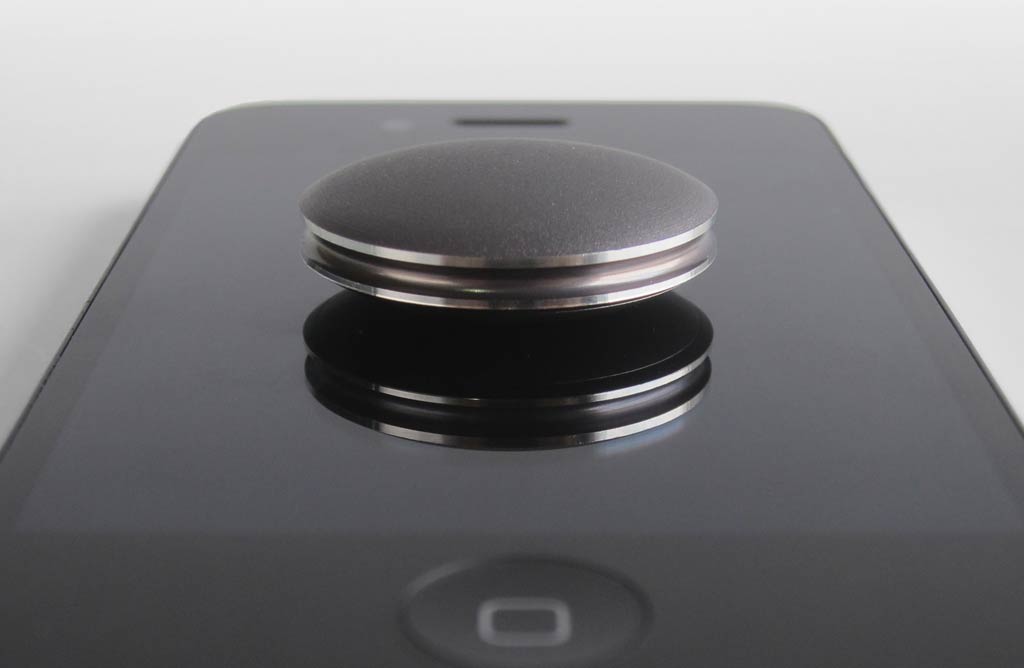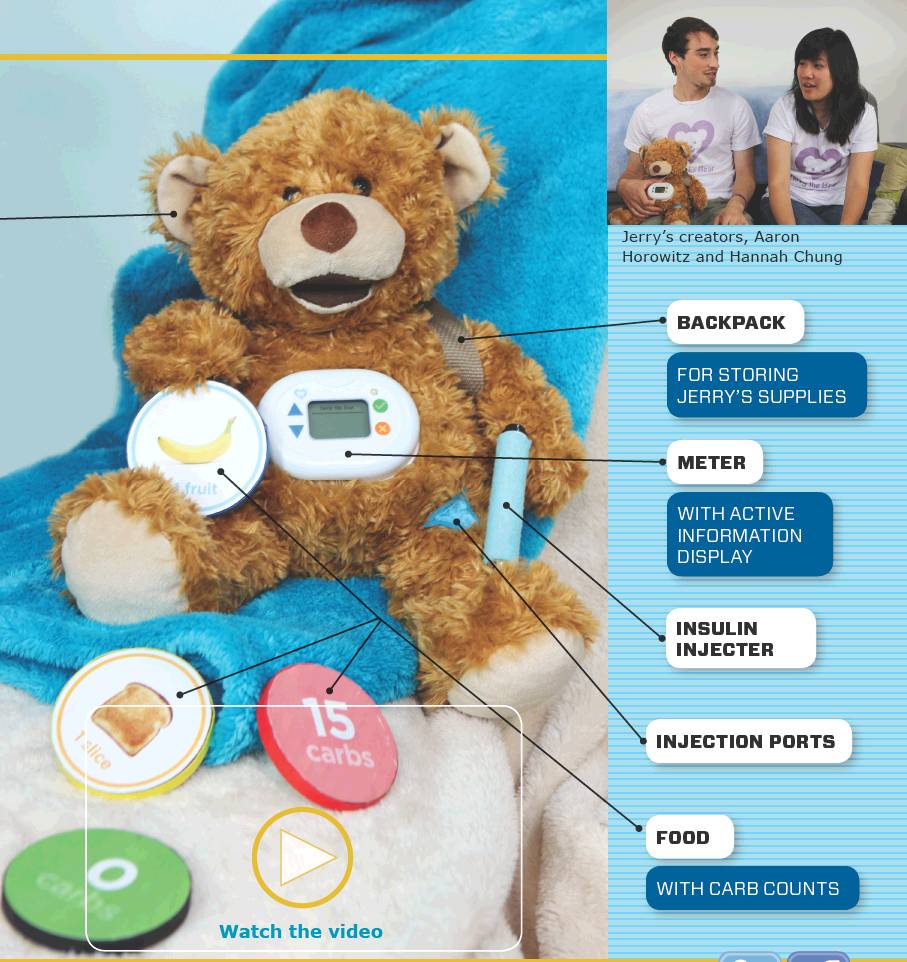A Sense of Who You Are

If a dashboard-mounted Steve Jobs icon were available – the technology version of a plastic Jesus – Sonny Vu might own one, or at least keep it in the glove box. Like Jobs, whom he greatly admires for his innovative genius, if not his personality, Vu wants technology to disappear, or, as he put it, “make technology invisible, so people don’t have to deal with it.” Vu is an inventor, not an executive, but venture investors, including one-time Apple CEO John Scully, back him willingly. His ideas launched a successful diabetes device business, Agamatrix, where he and his one-time grad school roommate, Sridhar Iyengar, created the “Nugget,” now marketed as Sanofi’s iBGStar glucometer. Conceiving of and building the world’s first “cool” meter – not by coincidence an iPhone plug-in – took them about a year. Now, they’ve embarked on a new venture, focused on “wearable” technology. Their new company, Misfit Wearables (misfitwearables.com), aims to bring stylish design to body-borne technology – and thus make the “patient, treat thyself” premise of wearables stylish as well as useful.
Wearable technology built around sensors, in case you haven’t heard, is the next generation of development in the post-PC world. Dozens of young and start-up companies – and one giant, Nike – compete with each other to equip fitness- and health-conscious consumers with devices and apps that collect and display data about the inner workings of their bodies, including physical activity, workout intensity, caloric intake and consumption, heart rate, and sleep patterns. Armed with wearable sensors, people with diabetes, or just folks who want to stay healthy, can assemble accurate pictures of their progress towards fitness goals. To date, most of the innovations focus on connecting algorithms with sensors that produce and display a lot of raw data, with additional input from the wearer. But interpretation and behavior-change advice surely will follow. In a recent report, the highly respected tech think tank, Forrester Research, called wearables the “Smart Body, Smart World” movement. It’s technology’s new frontier.

New Kids On The Block – Again
A decade ago, Vu and Iyengar chose to apply their combined talents in mathematics, sensors, and computing to making more accurate glucometers. Neither had any family history of diabetes, or knew very much about the condition: they chose the market because if its size. At the time, a variance of 20% was allowed in meters reporting glucose results. “We didn’t know anything about the biology or chemistry of it,” Vu said, “so we concentrated on improving accuracy with better signal processing.” Without too much trouble, they succeeded in writing formulas that dramatically increased glucometer accuracy. Then, someone pointed out to them that the added expense of making a more accurate meter only served to increase the cost of something manufacturers wanted to give away. The profit in diabetes testing lay in the test strips. “It wasn’t a good product idea,” Vu said.
Ultimately, the duo decided to design and produce a meter that seamlessly integrated with an existing, essential, and ubiquitous device: Apple’s iPhone. “It was all about convenience,” Vu recalled. “We wanted to make a meter that was part of something people wanted to carry and use.” The “Nugget” allowed diabetics to carry just test strips and a lancing device. Sanofi brought the new device into the diabetes mainstream, and it has been successful.
Creating iBGStar was a great accomplishment, but Vu wasn’t content to rest on his laurels. “I felt like a fat executive with an expense account,” he recalled. “I wanted to be inventing again.” Having fundamentally changed the way glucose meters look and act by connecting them to a mainstream technology product, in late 2011, Vu decided to venture into wearables. He assesses competitive products in his new chosen field with a skeptical eye. “I don’t want this to come off as hubris,” he said, “but the whole field seems like a misnomer. “They’re called “wearables,” he said of competitive products, “but they’re not wearable, at least not all the time. Would you wear it to your prom? Your wedding? NO! It just looks ridiculous.”

Shine, the Misfit team’s first device, satisfies his criteria for something wearable anywhere. Carved out of aircraft-grade aluminum, it’s 100% metal, slightly larger than a quarter, and weighs less than four ounces. Its magnetic clip won’t break and you can wear it anywhere, from on your shoes to around your neck. Its battery lasts six months and is inexpensive to replace. Waterproof, it tracks not only the steps one takes but also swimming and cycling exertion. And its visual cueing is cool. Tiny holes drilled into the device around its periphery light up when its center is tapped; a full circle of lights means your daily activity goal has been reached. Shine syncs with an iPhone automatically when placed on the phone’s face. No cables, no typing, no sweat.
Besides math, Vu’s academic concentration at MIT was linguistics, where he may have encountered Thoreau’s famous adage, “Our life is frittered away by detail….Simplify, Simplify!” Shine, he said, “is designed for the people from Oklahoma City, and I can say that because that’s where I grew up, not Boston or San Francisco. You don’t have to know how to sync up Bluetooth devices. Shine finds the device (your smartphone) and syncs with it automatically. Simple.” And very cool when demonstrated. Finishing second in the “Last Gadget Standing” competition at CES 2013 may increase Shine’s allure to early adopters
All this durability, functionality, and style does not come cheap to its manufacturers. When it is released in March 2013, Shine will retail for $99. It is not a high-profit margin product, even at that price, because creating it requires both expensive raw materials and precision engineering. Various accessories – such as wristbands and necklaces, can increase Shine’s profit margin and make the total price of a package as much as $150. Using a “soft launch” strategy, Misfit has teamed with Indiegogo to see how many people would “contribute” at various price points to reserve one of the first Shines shipped. Just before publication of this article, several thousand buyers had lined up and pledged $840,000 in revenue to the new company. The amount exceeds Misfit’s stated goal by 840%.
Preaching To The Choir?
The biggest difference between Agamatrix’s “Nugget” and Misfit Wearables’ Shine is that the “Nugget” was built for a company – Sanofi – with an established brand in a big and profitable market. Even though Sanofi had never marketed a glucometer, it knew where the diabetes bodies were buried, so to speak. There is no such soft landing in store for Shine, which takes its place alongside dozens of competitors, among them BodyMedia’s Fit System, Fitbit’s sensors, the FitLinxx product suite, and Sweetwater Health’s Sweetbeat. [See related story, “Hyperactive: The Pedometer Gets A Makeover”]
It is beyond ironic that obesity among Americans of all ages and ethnic groups is at an all-time high (60% +), while it’s never been easier to monitor your health and use technology to support wellness. Perhaps the trends will combine to create a huge market for wearable sensors. It’s also possible that all of the fitness companies and apps are chasing the same relatively small group of customers.
How many? A clue may be the 30 million downloads, so far, of the free MyFitnessPal calorie-counting app to both Apple and Android devices. While that’s an impressive number, it represents only a fraction of the obese population in the United States. This means that all of the activity monitor makers in the wearables space might be chasing the same people – younger, tech savvy, educated, affluent, active, early adopters. The same people who, even if they have diabetes or other chronic conditions, are very conscious of their health and willing to work towards wellness. In the early stages of tablet computing, some speculated that only the tech-savvy would want to own one, a prediction that obviously turned out to be dead wrong. But it’s hard to visualize that phenomenon repeating itself for activity monitors; the obesity numbers tell a contradictory tale.
For now, Misfit Wearables can’t fret over who may not use their product. It has to find those who will. Is style important? Vu believes the answer is an emphatic “Yes!” That’s because, he thinks style improves the likelihood that the device will be worn long term. “This isn’t breakthrough technology,” he said. “3D accelerometers have been around for 20 years. No one has a leg up on anyone [in this market]. But there’s nothing more inaccurate than a really accurate sensor you don’t wear.”
Thanks for reading this Insulin Nation article. Want more Type 1 news? Subscribe here.
Have Type 2 diabetes or know someone who does? Try Type 2 Nation, our sister publication.







